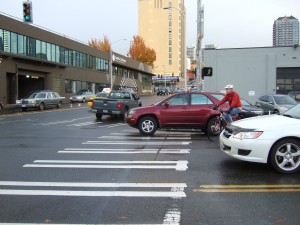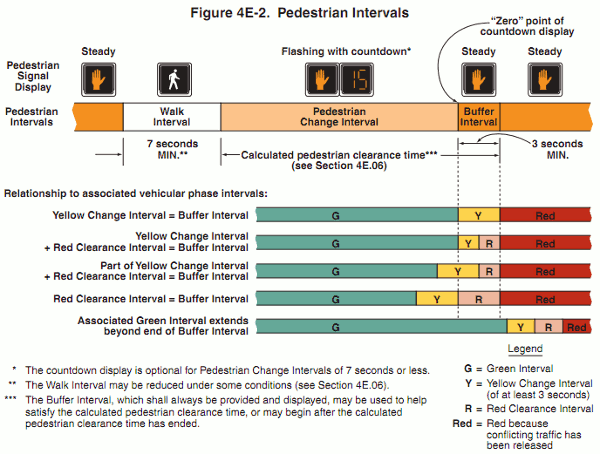Streets for All Seattle has a wealth of information on what the proposition funds. As related to pedestrian infrastructure, the proposition would fund a variety of improvements around the city, shown on the map at right, and explained by Streets for All Seattle:
A $44 million investment in our neighborhoods will double our city’s annual investment in new sidewalks, add hundreds of crossing improvements and new pedestrian countdown signals, expand family-friendly bicycle infrastructure, fund the completion of a freight master plan, and expand the Neighborhood Street Fund by nearly 50% to provide more sidewalks, safe crossings, and other safety needs identified by neighborhood councils.
This funding will come from a $60 car tab fee that will be levied for the next ten years. While opponents charge that the fee is regressive and impacts poorer drivers more than richer ones, it will make it easier to get around without a car. Sightline does a good job of putting this $60 fee in perspective of the overall costs of car ownership.
If you already support this, Streets for All Seattle is making a big push to voters:
Ballots have dropped. Now it’s time to vote yes on Prop 1.
There’s 380,000 registered voters in Seattle — and the best way to convince them to vote yes is with face-to-face conversations. That’s why we’re holding a huge canvass on October 23rd to talk to thousands of people.
Let us know that you’re coming to The Big Neighborhood Canvass this Sunday >>
Proposition 1 is a down payment on becoming a 21st Century great American city. Designed by a citizen panel, Prop 1 will connect our neighborhoods with fast, reliable transit service, double our annual investment in sidewalks, nearly double the number of neighborhood repaving projects we do every year, and expand family-friendly bicycle infrastructure. Prop 1 is thousands of smart, simple improvements that will make our transportation system work better for everyone.
But our opponents are working to defeat us with a deceptive campaign that has mis-stated facts and mis-represented who their supporters are. In fact, our opponents are supported by the president of the Seattle Republican Party and their main funder is an anti-transit land barron.
With ballots in everyone’s mailboxes, we’ve got to double-down and talk face-to-face with thousands of Seattle voters this weekend.
Join us on Sunday for The Big Neighborhood Canvass >>
Details:
Day: Sunday, October 23rd
Meet: 11 a.m. at the Sierra Club Office, 180 Nickerson St.
End: 3-4 p.m.If you have time for just one volunteer activity this election season, this is the one you should do. After you RSVP, we’ll send you additional details.
Vote yes on Proposition 1 to make Seattle a better, more walkable city, and get out and encourage others to do so as well.







